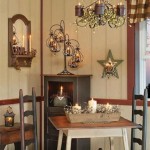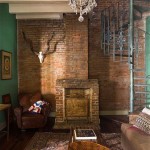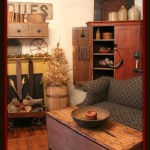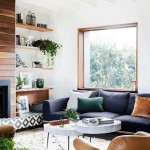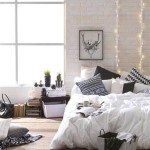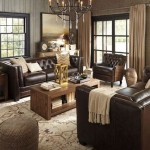Embracing Tranquility: Chinese Home Decor Ideas
Chinese home decor, deeply rooted in history and philosophy, offers a unique approach to creating serene and balanced living spaces. It's more than just aesthetics; it's about cultivating harmony, promoting well-being, and honoring tradition. The principles of Feng Shui often guide the design process, emphasizing the flow of energy (Qi) and the balance of Yin and Yang. This article explores key elements and ideas to incorporate Chinese decor into various homes.
The Foundation: Understanding Feng Shui Principles
Feng Shui, meaning "wind and water," is a core element of Chinese decor. It’s an ancient practice that aims to arrange spaces to optimize the flow of Qi, believed to influence health, prosperity, and happiness. When incorporating Feng Shui, attention is paid to the placement of furniture, the use of colors, and the inclusion of natural elements.
Orientation is crucial. The direction a home faces and the placement of furniture within a room are considered significant. Optimally, furniture should be arranged to allow for a clear line of sight to the entrance, providing a sense of security and control. Clutter is discouraged, as it obstructs the flow of energy. Regular decluttering and organization are essential for maintaining a harmonious environment. Mirrors are frequently used to enhance space and redirect energy flow, but their placement requires careful consideration to avoid negative impacts on Qi.
The Five Elements – Wood, Fire, Earth, Metal, and Water – are also vital in Feng Shui. Each element corresponds to specific colors, shapes, and materials. Balancing these elements within a space is believed to create a sense of equilibrium. The strategic use of these elements can be used to enhance specific areas of life, such as career, relationships, or health. For instance, incorporating wood elements like plants or wooden furniture in the east or southeast sectors of the home is believed to promote growth and prosperity. Adding water elements like a small fountain or aquarium in the north sector of the home can be beneficial for career advancement.
Yin and Yang represent contrasting yet complementary forces. Yin embodies tranquility, passivity, and darkness, while Yang represents activity, energy, and light. A well-balanced space incorporates both Yin and Yang to create a sense of harmony. This balance can be achieved through the use of colors, textures, and lighting. Soft lighting, plush rugs, and calming colors like blues and greens represent Yin, while bright lights, bold colors like red and gold, and active spaces like a home gym represent Yang. A balanced home incorporates both elements to promote overall well-being.
Color Palette: Symbolism and Harmony
Colors in Chinese decor are laden with symbolism and are carefully chosen to evoke specific emotions and energies. While specific color palettes may vary based on personal preference and the intended effect, certain colors are frequently used and carry significant meaning.
Red is a dominant color, representing luck, prosperity, and happiness. It's often used sparingly as an accent color, adding vibrancy and energy to a space. Red can be incorporated through artwork, textiles, or decorative objects. However, excessive use of red can be overwhelming and is often balanced with more calming colors.
Gold symbolizes wealth, power, and good fortune. It is often used in combination with red to enhance its auspicious qualities. Gold can be incorporated through gilded furniture, decorative accents, or metallic finishes. Similar to red, gold should be used strategically to avoid creating a gaudy or opulent atmosphere.
Black represents water and is associated with depth, mystery, and protection. Black is often used to create a sense of grounding and stability. It can be incorporated through dark wood furniture, black lacquered accents, or dark-colored textiles. Black is often balanced with lighter colors to prevent the space from feeling too heavy or somber.
Green represents wood and is associated with growth, harmony, and renewal. Green is often used to create a sense of tranquility and connection to nature. It can be incorporated through plants, green-colored textiles, or artwork depicting natural scenes. Green is a versatile color that can be used in various shades to create different moods.
Blue represents water and is associated with serenity, wisdom, and peace. Blue is often used to create a calming and relaxing atmosphere. It can be incorporated through blue-colored walls, textiles, or artwork depicting water scenes. Blue is a popular choice for bedrooms and other spaces intended for relaxation.
Neutral colors like white, beige, and gray are often used as a backdrop to showcase the more vibrant accent colors. These colors create a sense of balance and allow the other colors to stand out. Neutral colors can be incorporated through walls, flooring, or large pieces of furniture.
Key Elements: Furniture, Art, and Accessories
Furniture, art, and accessories play a significant role in shaping the aesthetic and energy of a Chinese-inspired home. Each element is carefully chosen to reflect cultural values and contribute to the overall harmony of the space.
Furniture often features clean lines, elegant curves, and intricate carvings. Dark wood, such as rosewood or ebony, is commonly used. Pieces are often low to the ground, promoting a sense of stability and groundedness. Traditional Chinese furniture includes chairs with curved backs, ornate screens, and lacquered cabinets. The placement of furniture is crucial for optimizing the flow of Qi. Furniture should be arranged to allow for easy movement and a clear line of sight to the entrance of the room. Avoiding clutter and maintaining a sense of openness are essential.
Art often depicts landscapes, flowers, birds, and calligraphy. These themes are chosen for their symbolic meanings and their ability to evoke specific emotions. Landscape paintings represent harmony with nature, while floral paintings symbolize beauty and prosperity. Bird paintings represent freedom and good fortune, while calligraphy embodies wisdom and knowledge. Artwork is often displayed prominently, serving as a focal point in the room. Consider framing artworks using natural materials like wood or bamboo to complement the overall aesthetic.
Accessories include porcelain vases, silk cushions, jade sculptures, and bamboo screens. These elements add texture, color, and cultural significance to the space. Porcelain vases are often decorated with intricate designs, while silk cushions add a touch of luxury and comfort. Jade sculptures are highly valued for their beauty and symbolic meanings, while bamboo screens provide privacy and create a sense of tranquility. The number and placement of accessories are important. Avoiding over-cluttering and maintaining a sense of balance are crucial for creating a harmonious environment.
Lighting plays a crucial role in creating the desired ambiance. Soft, warm lighting is generally preferred, promoting relaxation and serenity. Paper lanterns and silk lampshades are often used to diffuse light and create a gentle glow. Natural light is also highly valued. Maximizing natural light by keeping curtains open and using mirrors to reflect sunlight can significantly enhance the energy of the space.
Plants are an integral part of Chinese decor, bringing life and vitality to the space. Bamboo is a particularly popular choice, symbolizing resilience and strength. Orchids represent beauty and refinement, while bonsai trees symbolize harmony and balance. The placement of plants is also considered. Placing plants in areas that receive ample sunlight and avoiding placing them in areas that obstruct the flow of Qi are important considerations.
By incorporating these key elements, it's possible to create a home that is not only aesthetically pleasing but also promotes a sense of well-being and harmony. The key is to embrace the underlying principles of Feng Shui and to choose elements that resonate with individual preferences and values.

Chinese Interior Design You Ll Love It Designcafe

Bring Asian Flavor To Your Home 36 Eye Catchy Ideas Digsdigs

Chinese Culture And Traditional Decorating Interior Interact China Living Room Asian Decor

Chinese Interior Design You Ll Love It Designcafe

6 Festive Home Decor Ideas For Chinese New Year 2025

Pin On Home Inspo

Ideas To Help You With Introducing Chinese Theme Décor Items Your Home Hometone Automation And Smart Guide

Chinese Interior Design You Ll Love It Designcafe

A Beautiful 2 Bedroom Modern Chinese House With Zen Elements Includes 3d Floor Plan

10 Ideas To Decorate The House Welcome New Year
